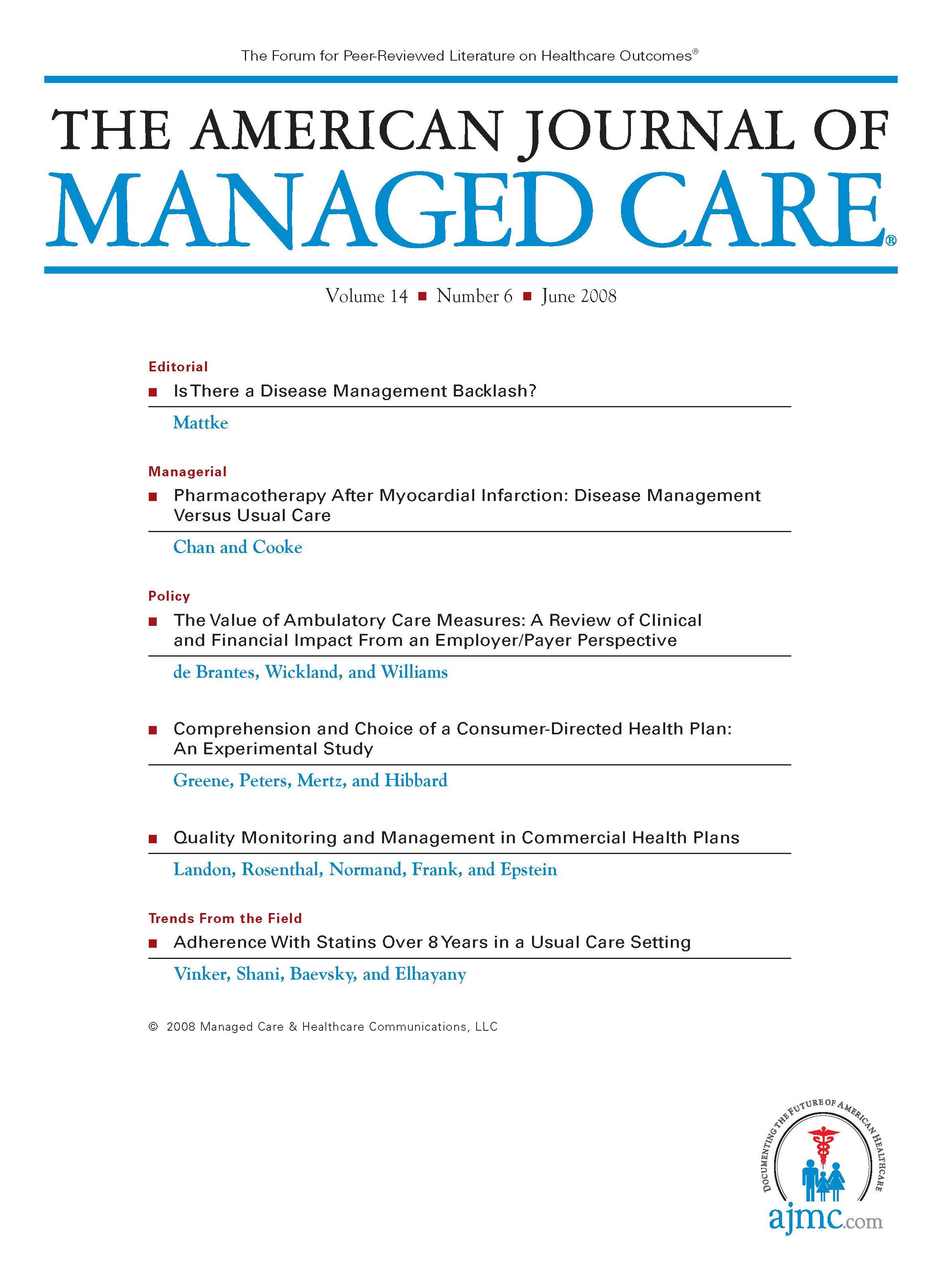- Center on Health Equity & Access
- Clinical
- Health Care Cost
- Health Care Delivery
- Insurance
- Policy
- Technology
- Value-Based Care
Cost-Effectiveness of Blood Glucose Monitoring Is Controversial
TO THE EDITORS
:
VA Center for Medication Safety, Hines VA
Center for Health Equity Research and Promotion, VA
School of Pharmacy
VA Greater Los Angeles Healthcare System
Los Angeles, California
Funding: None reported.
Author Disclosure: The authors report no relationship or financial interest with any entity that would pose a conflict of interest with the subject matter of this article.
Address correspondence to: Sherrie L. Aspinall, PharmD, MSc, VA Pittsburgh Healthcare System, Center for Health Equity Research and Promotion (151C-H), 7180 Highland Dr, Pittsburgh, PA 15206. E-mail: sherrie.aspinall@med.va.gov.
References
2. Karter AJ, Parker MM, Moffet HH, et al. Longitudinal study of new and prevalent use of self-monitoring of blood glucose. Diabetes Care. 2006;29(8):1757-1763.
4. Davidson MB, Castellanos M, Kain D, Duran P. The effect of self monitoring of blood glucose concentrations on glycated hemoglobin levels in diabetic patients not taking insulin: a blinded, randomized trial. Am J Med. 2005;118(4):422-425.
IN REPLY
:
Health Economics and Outcomes Research
Noblesville, IN
Funding: LifeScan, A Johnson and Johnson Company.
Author Disclosures: The authors (SLT, MEM) are employees of IMS, a company that provides contracted research consulting to LifeScan.
Address correspondence to: Sandra L. Tunis, PhD, Health Economics and Outcomes Research, IMS Consulting Services, 14701 Cumberland Rd, Ste 107, Nobelsville, IN 46060. E-mail: stunis@us.imshealth.com.
1.Tunis SL, Minshall ME. Self-monitoring of blood glucose in type 2 diabetes: cost-effectiveness in the United States. Am J Manag Care. 2008;14(3):131-140.
3. Centers for Disease Control and Prevention, National Center for Health Statistics. National Nutrition and Health Examination Survey (NHANES) data. Hyattsville, MD: US Department of Health and Human Services; 2000.

Trends in Hospital Pricing for Vulnerable Emergency Department Users, 2021-2023
December 4th 2025Self-pay emergency department prices rose significantly from 2021 to 2023, especially at for-profit and system-affiliated hospitals, highlighting growing affordability challenges for uninsured and underinsured patients.
Read More
Integrated Care for Chronic Conditions: A Randomized Care Management Trial
December 3rd 2025The authors sought to understand the differential impact of payer-led community-based care management approaches on stakeholder-oriented outcomes for publicly insured adults with multiple chronic conditions.
Read More

